BRONZE AGE BONANZA wraps up the year with 1970’s very best of the best…
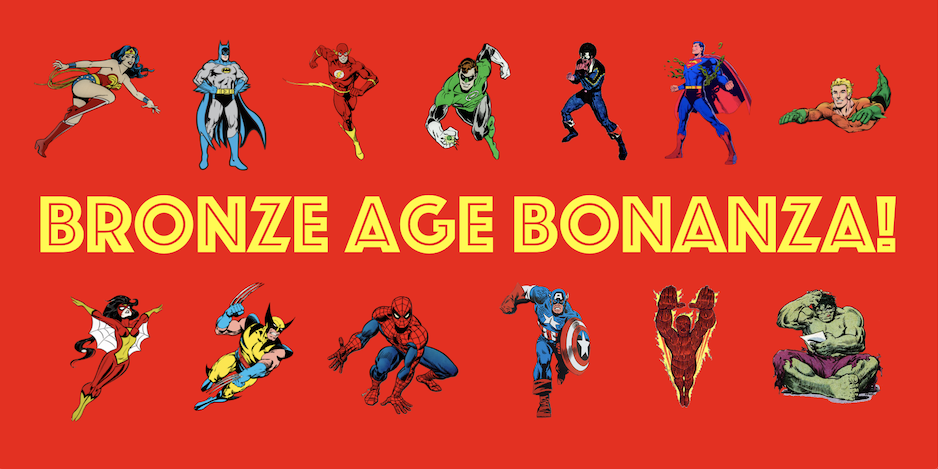
—
Welcome to BRONZE AGE BONANZA — our monthly series that looks at the greatest covers of the Bronze Age — exactly 50 years later. For more info on this feature, click here.
—
I started BRONZE AGE BONANZA on a lark back in January to celebrate the 50th anniversary of the beginning of comics’ greatest era and it’s been even more gratifying than I expected. You folks have responded strongly and I really look forward to putting it together every month.
Well, as promised at the start of the year, the grand finale is THE TOP 13 COVERS OF 1970 — RANKED. We took the winners of each month, added a wild card and came up with the best of the best. (As always, the months are based on sale dates, not pub dates.)
The list is just below — but don’t forget: BRONZE AGE BONANZA will be back after the New Year with THE TOP 13 COVERS OF JANUARY 1971.
Dig it.
—
13. Superman’s Girl Friend Lois Lane #106, DC (Winner, Sept. 1970). This cover was selected based on its sheer notoriety. Misguided? Yes. Forgettable? No.
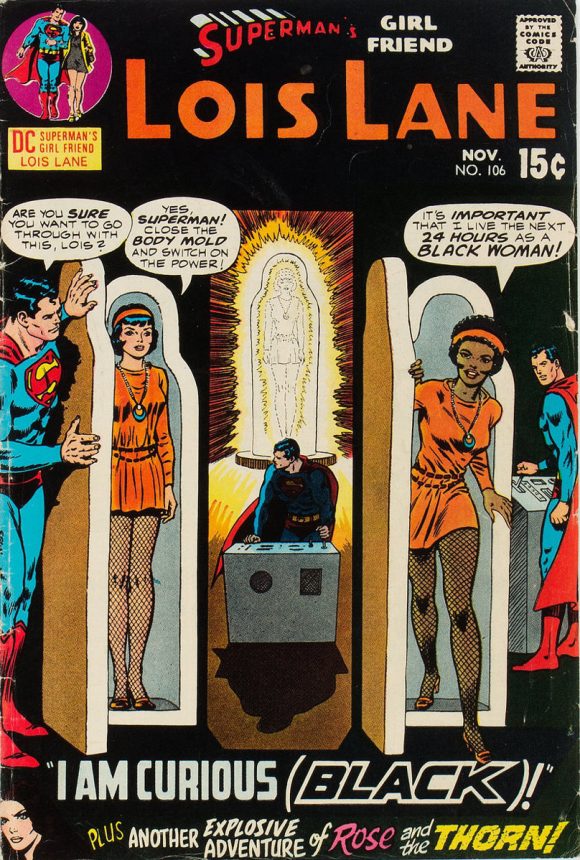
Curt Swan pencils, Murphy Anderson inks
—
12. Detective Comics #397, DC (Winner, Jan. 1970). This cover is an undeniable classic but Neal Adams is all over this list. That this is 12th should tell you something.
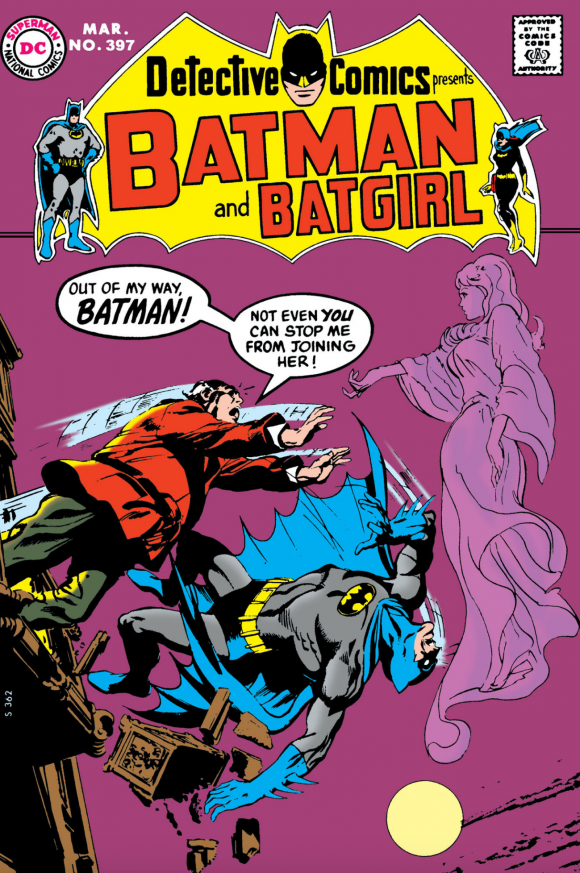
Neal Adams
—
11. Teen Titans #28, DC (Winner, May 1970). Nick Cardy, one of the all-time greats who could pretty much draw anything, was a constant throughout BRONZE AGE BONANZA in a number of genres. But Adams dominated the year, so this is Cardy’s only appearance on this list. But, man I love the power of this cover: Aqualad has never looked tougher.
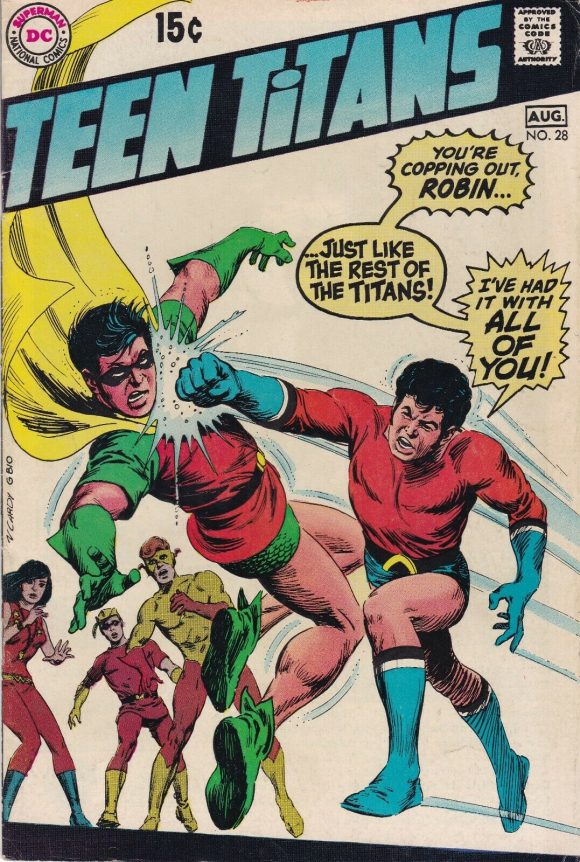
Nick Cardy
—
10. Detective Comics #402, DC (Winner, June 1970). Again, an iconic Adams cover. Again, it’s relatively low on this list because of what’s to come. (By the way, go back and re-read those original Man-Bat stories written by Frank Robbins. Outstanding. Man-Bat’s kind of played out now, but at the time he was a truly compelling addition to Batman’s world.)
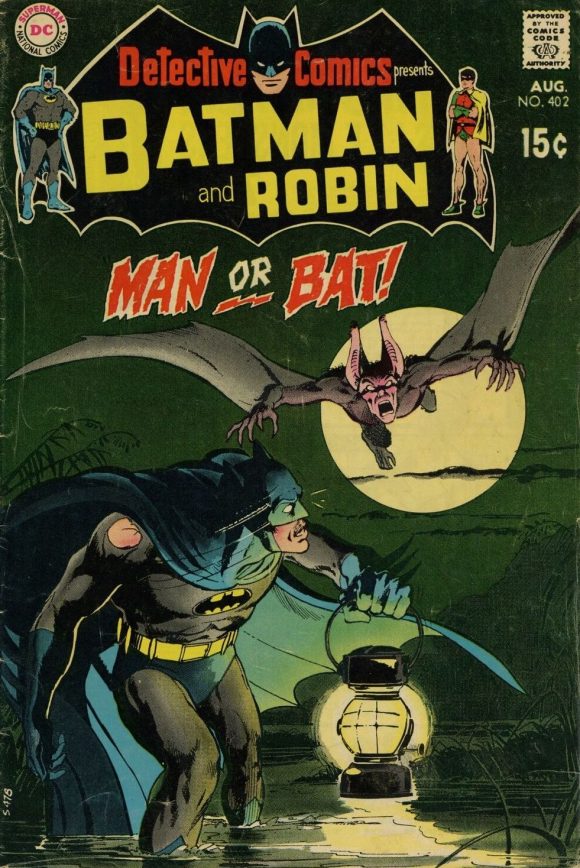
Adams
—
9. Our Army at War #220, DC (Winner, March 1970). Like Cardy, Joe Kubert was all over BRONZE AGE BONANZA with his magnificent war covers. This is probably one of his most memorable but there’s actually another to come that is among his most stark illustrations ever.
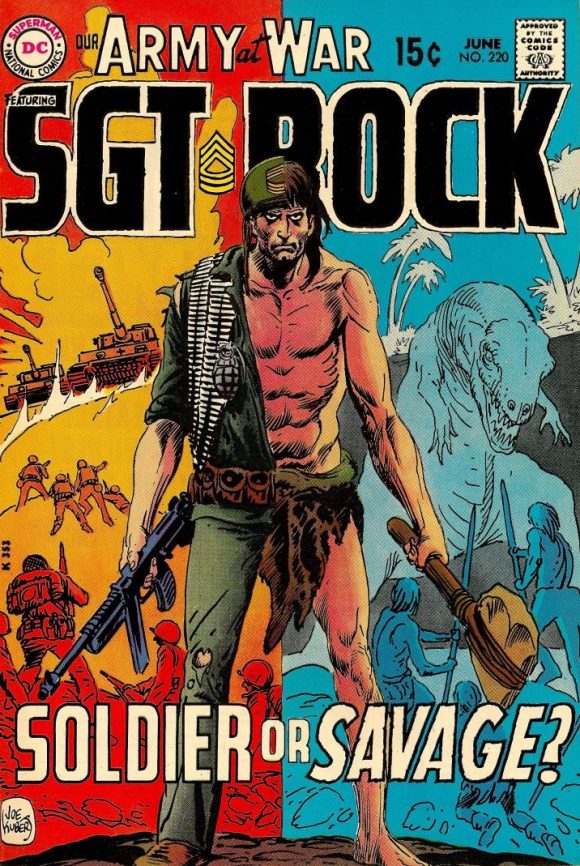
Joe Kubert
—
8. Batman #222, DC. (Winner, April 1970). C’mon it’s Batman Meets the Beatles. Still, I did struggle between this and Adams’ Detective Comics #400, which ultimately finished second that month. I remember seeing this as a wall book and wondering how I’d ever get my hands on it. Well, I have it and it remains one of my favorite Batman covers ever.

Adams
—
7. Star Spangled War Stories #154, DC. (Wild Card/No. 2, Oct. 1970). I knew from the get-go that to have a final TOP 13 for the year, I’d need to add the best of the second-place finishers. Not an easy task. Then I had to decide whether to automatically put that cover at No. 13 on this list. I was talked out of it because the covers should be judged on their merits, period. So even though this was a No. 2, it’s still more powerful than half the monthly winners. In one large bold image, Joe Kubert encapsulates the pain, anguish, rage and waste of war. There’s a lot of copy on the cover but that main shot is brutally haunting. A masterpiece.
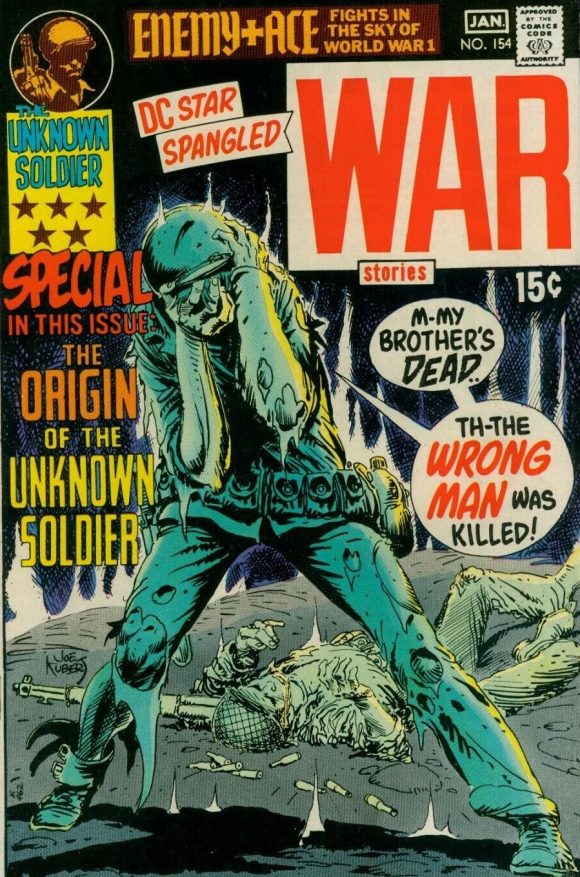
Kubert
—
6. Conan the Barbarian #1, Marvel (Winner, July 1970). Oh, hey, a Marvel cover! Even taking my inherent DC bias out of the equation, a dispassionate look at the year’s selections shows that the Distinguished Competition had a better cover game in 1970, favoring bigger, more powerful imagery vs. Marvel’s crowded tapestries of action. (DC having Adams helped too, naturally.) Anyway, this is not the best Conan cover ever and it’s certainly not the best Barry Windsor-Smith cover ever (he was still evolving as an artist). But it’s still terrific and the historical impact and import of this issue cannot be ignored.
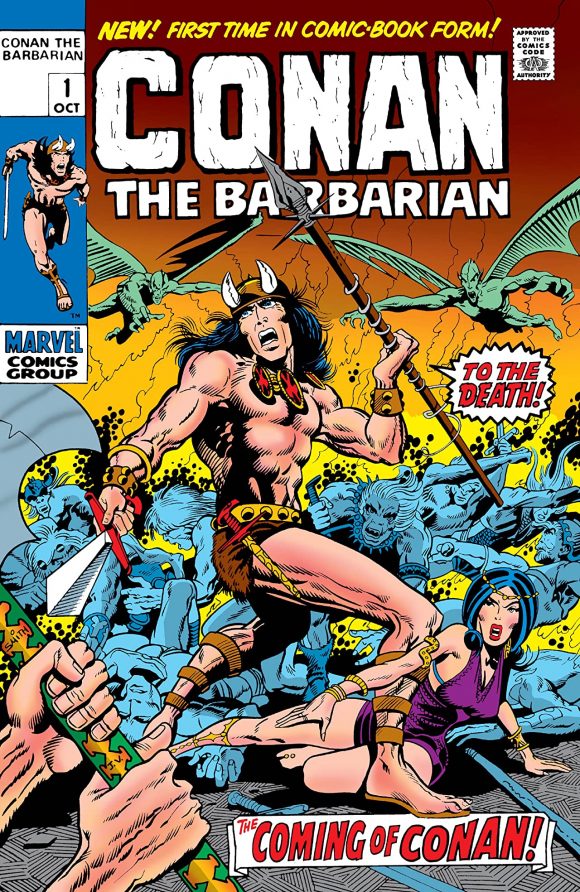
Barry Windsor-Smith pencils, John Verpoorten inks
—
5. New Gods #1, DC (Winner, Dec. 1970). Striking cover by Jack Kirby, cementing his move from Marvel. Love the colors and visual trickery; when readers in 1970 first saw this, they had to be thinking “What the hell is Kirby up to here?” In the end, DC never gave Kirby the support he needed but the seeds he sowed half a century ago resonate to this very day. Another historic moment in comics.
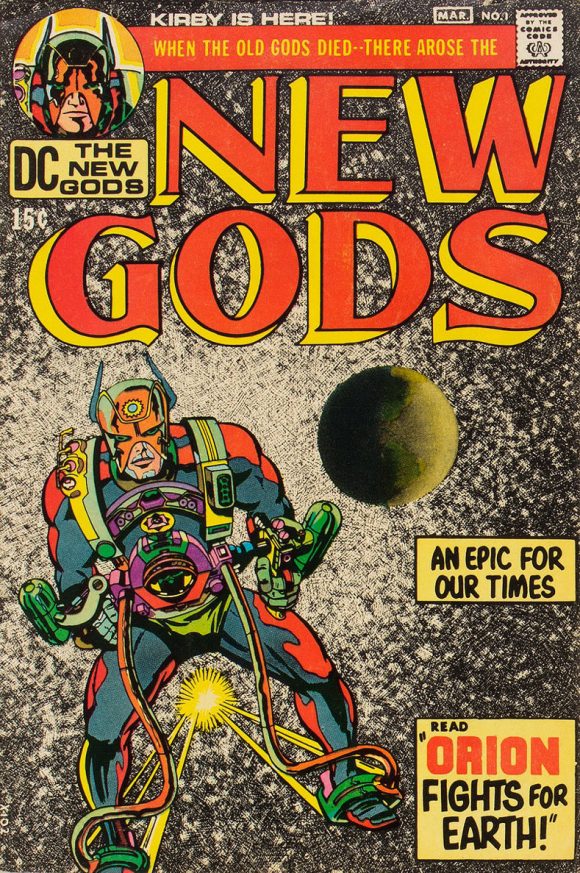
Jack Kirby pencils, Frank Giacoia or Don Heck inks
—
4. Amazing Spider-Man #90, Marvel (Winner, Aug, 1970). Classic tableau from a classic story by the two best Spider-Man artists ever. (Apologies to Steve Ditko.) Great perspective, concept, shading and overall execution.
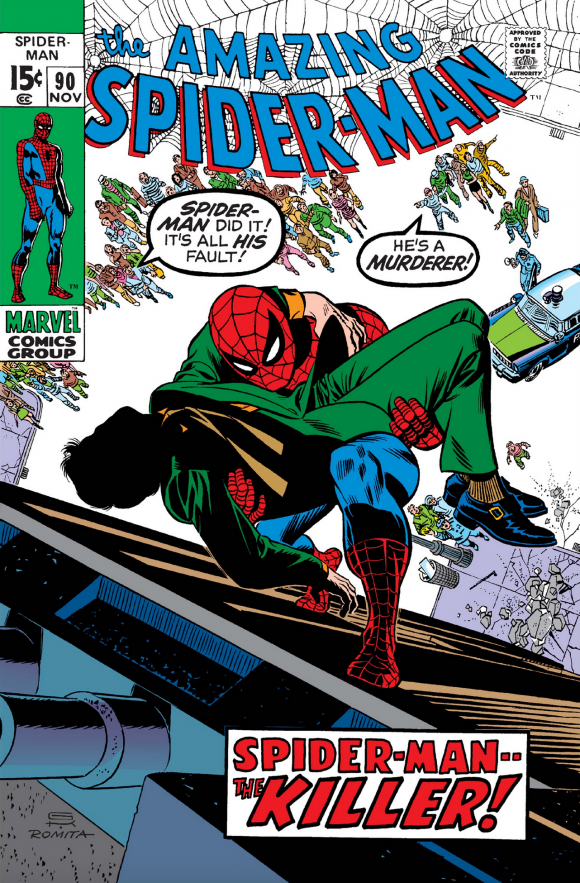
Gil Kane pencils, John Romita inks
—
3. Batman #227, DC (Winner, Oct. 1970). This may be an homage to Detective Comics #31 but Neal Adams makes the cover his own. A lot of artists have tried their hand at this one but nobody, and I mean nobody, has ever come close to Adams here. A lot of you would pick this to top this list. Just wait until you see what’s still coming.
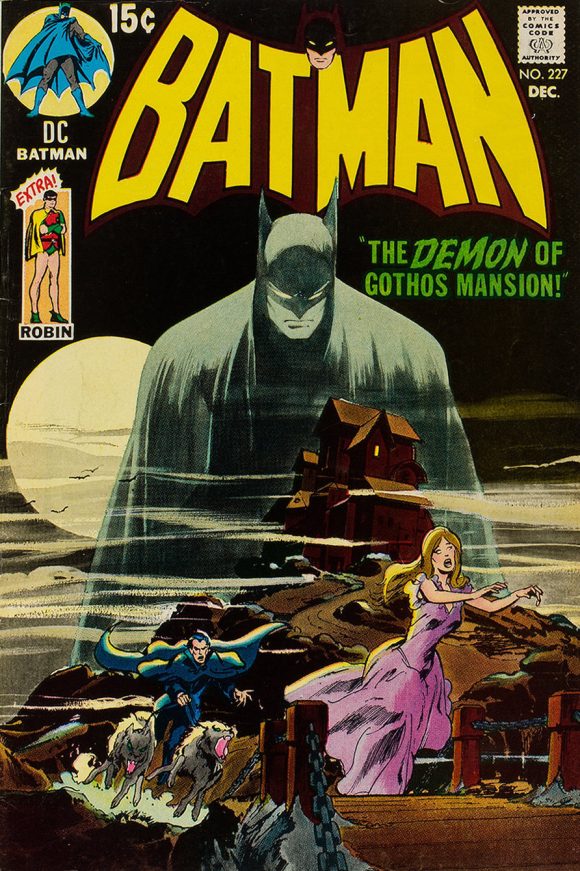
Adams
—
2. Superman #233, DC (Winner, Nov. 1970). Greatest image of the greatest superhero ever? It’s an argument you could easily make, even if Adams himself wouldn’t say so. This is my son’s all-time favorite comics cover and he lobbied hard for this to be 1970’s big winner — but there’s one more that cannot be beat.
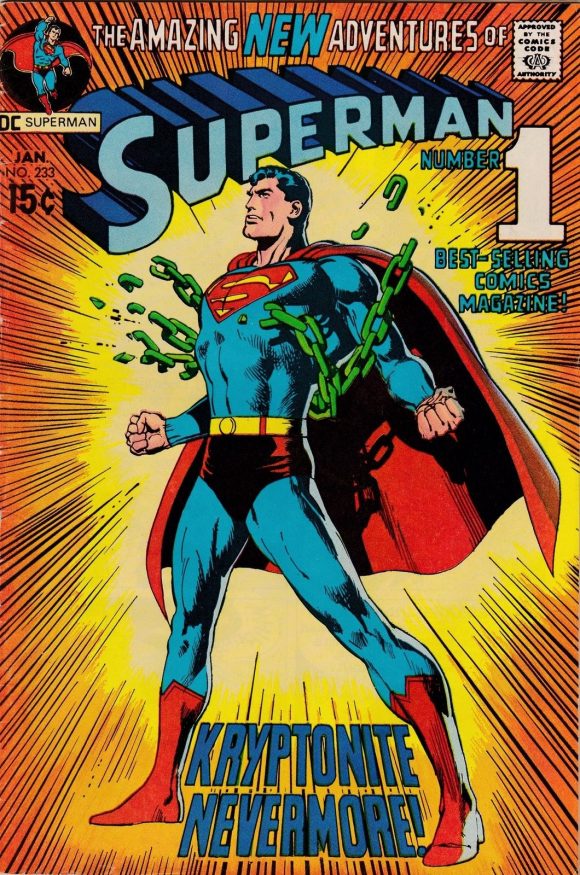
Adams
—
1. Green Lantern #76, DC (Winner, Feb. 1970). On a personal level, Batman #217 was the start of the Bronze Age for me. To pretty much everyone else, it was the late Denny O’Neil and Neal Adams’ landmark GL/GA #76 — and in all candor, you can’t really argue the point. This issue — with its stupendously dramatic cover — heralded a whole new form of mainstream comics storytelling. That’s a lot of muscle there and I can’t see how you could ultimately pick any of 1970’s covers ahead of this one.
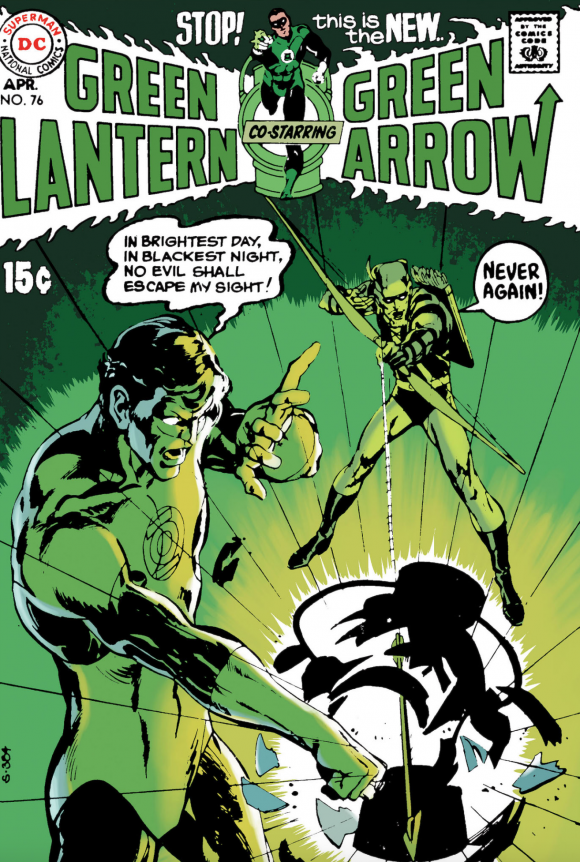
Adams
—
NOTE: For you stat freaks, here’s the breakdown by penciller: Neal Adams has six covers and Joe Kubert has two. Curt Swan, Nick Cardy, Barry Windsor-Smith, Jack Kirby and Gil Kane (inked by John Romita) have one each.
—
MORE
— Introducing BRONZE AGE BONANZA. Click here.
— BRONZE AGE BONZANA: The 1970 INDEX. Click here.

December 27, 2020
These old DC and Marvel covers are so groovy.
December 28, 2020
Great list!! I’ve enjoyed the roll-out and the thought that went into the whole event.
I have a soft spot for FF 100, but probably because they were my favorite as a kid and all the time and shiny dimes I spent collecting all the pieces of the FF 100 puzzle on the back of one early series of Marvel Super Heroes trading cards. New Gods 1 is admittedly historic, but a host of other Kirby covers offer a lot of bang for the buck – think Thor 177. I hate not seeing a Gold Key painted cover on the list, but which one, I know. Similarly, there are a few Little Dot covers that are wonderfully simple, fun snf memorable.
The Lois Lane cover makes the cut owing to social implications, so then how about Avengers 83? You’ve got a significant social angle AND a great Buscema cover to boot (seriously, a thing of beauty). I would probably move Conan 1 up a few spots, but it’s like splitting hairs at some point. Conan 1 and GL 76 – man, what seismic events. Throw in Superman 233 for both cover and story, add a dash of Batman 227, and you have one heck of a year in comics!
p.s. Is this the first year you did a month-by-month countdown with the year-end finale? If not, I’m in for some fun digging in the archives…
December 28, 2020
The year I learned to read (and started nagging my parents for comic books) was the year that all these great books came out. If I had been a few years older, I think comics (particularly DC comics) would have been right in line with my six-year-old sensibility. The early Bronze Age stuff was definitely more challenging, and I have to admit that some of Neal Adams’ covers frightened me a bit. But I think it was all for the best, in the end, because these comics forced me to wrap my mind around more complex concepts and character development than Jimmy Olson turning into a turtleman or whatever. Batman #227 was the first Batman comic I ever owned and, while it was a far cry from the TV series, I loved the gothic horror quality of it. I think I started reading comics at the most exciting era.
December 28, 2020
Other than death, marriage, birth, or usurpation, there are very few unambiguous demarcations in history. One era bleeds into the other and only after a generation or so do people have the detachment to identify the predominant characteristics of each age. Thus it is with the abundant friendly arguments over the ends of the Silver and Bronze Ages. The “End of the Silver Age” is often cited at, variously, the retirement of Mort Weisinger, Neal Adams’ resurrection of The Batman, the publications of Conan number 1 or Green Lantern’s “Spirited 76th” or the (first) death of Gwen Stacy. And many other signals. There’s no need to decide or dispute. The “Sterling Epoch” (my own coinage) spans from about the time Dick Giordano left Charlton for DC, to when Berni Wrightson finally bailed on Swamp Thing. About a six year transition, more or less.
December 29, 2020
Just admitting to a DC bias doesn’t excuse your list from some responsibility to be unbiased, if you expect it to be taken seriously.
December 29, 2020
OK
December 26, 2022
Can’t argue with the top two on this list, though I’m kinda partial to Detective #402.